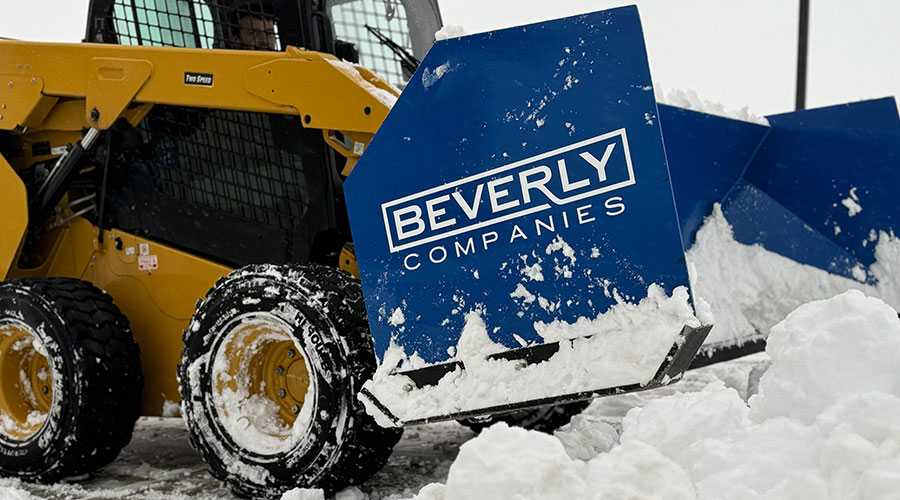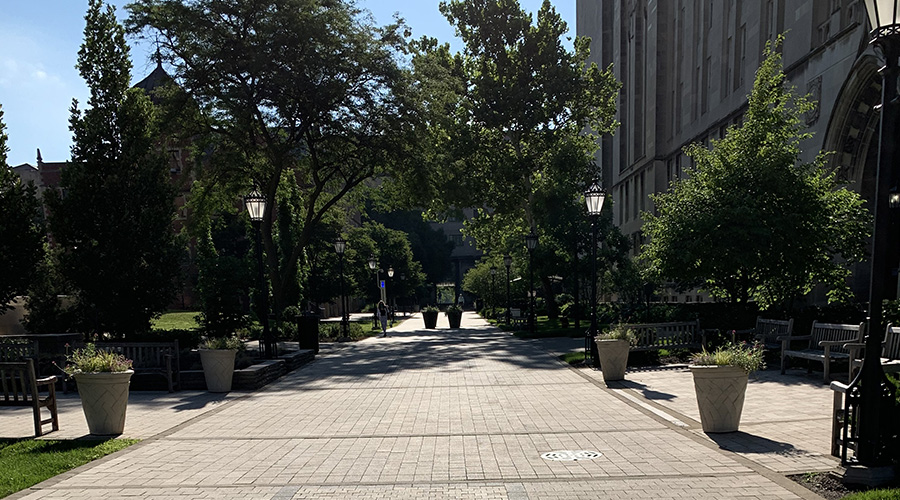Managers Discuss Incoming Technology Trends in Groundskeeping
It’s definitely an interesting time for grounds management, according to three managers who offered their thoughts on topics and trends for 2025 in areas such as grounds technology.
The grounds management industry continues to undergo change as the calendar flips to 2025. An increased emphasis on electric-powered equipment, continuing sustainability efforts and the emphasis on reduced water use means grounds managers at institutional and commercial facilities need to continually evolve. In this article, we look at some of the trends that managers are following.
The panel includes:
- Matt Bailey, landscape services manager, Michigan State University
- Paul Cushing, agronomist-sports field specialist, PC Turf Pro consulting service
- Shane Richards, landscape operations and maintenance manager, Utah State University
Facilities Maintenance Decisions: What landscape trends do you see emerging in 2025?
Richards: Utah is a desert state, and we’re kind of a high-altitude desert. We’re just under a mile high, so we’ve got cold, bitter cold winters, deep snow and dry summers. Some summers will go 90 to 100 days without irrigation or without rain. So the trends here are a lot of native plants. They want some native landscapes or some water-wise landscapes.
Bailey: Native plants and trees are a common topic in most landscape stewardship conversations, as well as the addition of more pollinator's gardens and rain gardens. Natural areas are also a hot topic, minimizing carbon emissions for maintenance.
Cushing: I was named an agronomist for FIFA in the World Cup (which the United States hosts with Canada and Mexico in 2026), and you’re going to see some incredible trends starting to come. All the fields are going to be hybrid stitched fields. So they’re natural grass-based fields, but they’re stitched with artificial turf, and that makes them much stronger and more resilient. Once this comes about, you’re going to start seeing NFL fields convert back to natural grass with the stitching.
What’s going on with lighting and being able to grow in-stadium and growing grass inside dome stadiums is huge. It’s going to change the turf industry. Whether it be the middle of the field that wears out during a season, the goal area on a soccer field or the area behind home plate in baseball, this application is going to be a game-changer in our industry.
FMD: How have issues such as labor shortages and evolving technologies affected your department?
Bailey: Labor shortages have impacted our teams, as we are constantly having to teach and train new staff. One common issue is finding your way around a 5,000-acre campus and not getting overwhelmed. With staff fluctuations, it seems like we are constantly training new people on operations, as well as policies and practices. We also experience more equipment damage due to less experienced team members causing more downtime and significant costs with parts and equipment costs up 40 percent.
Richards: Grounds management is becoming an art and a science. I have 20 full-time (workers) on my staff, and out of the 20 of us, I think there’s 18 that have advanced degrees, and there’s about 300 years of experience. It used to be 30 years ago, you just got someone to come in and change some sprinklers or mow. Now, it’s about being more advanced, knowing how to run computer systems. The equipment is becoming more efficient, but it takes a little more training and experience to run. It is interesting that it’s starting to become a trade that needs education.
FMD: What is one main concern facing grounds managers in 2025, and why?
Bailey: With the rising cost of food, housing, vehicles, basically everything we need on a day-to-day basis, grounds maintenance managers are faced with constant requests to increase pay, especially to keep high-performing staff. I am finding people jumping around to make more money, not realizing some of the work/life benefits they have in more stable environments like universities and municipalities.
Cushing: Understanding what’s going on down in the soil is an intricate part of being a good grounds manager. I don’t see people soil testing enough. I use this analogy of when we go see a doctor, a doctor just doesn’t look at you and go, “Yeah, I’m going to pull your appendix out.” They’re going to run tests and do bloodwork and all sorts of things to figure out what’s going on. As field managers, we need to understand what’s going on down in the soil. I really like working with my clients creating long-term sustainability down in our soil.
Richards: Grounds management used to operate in the background. Nobody really asked questions or watched us carefully. Now it seems like it's something where people keep an eye on it. They want to know why you’re using the water the way you are or why you’re using the machine the way you are. They’re concerned about automation taking peoples’ jobs.
We’re actually putting people in different positions to make the landscape nicer but not getting rid of anybody. Labor, climate, water, landscapes — grounds now has become something you can’t do in the background anymore. You have to have a presence in public. You have to explain to the administration, the public, that we’re using the tax dollars the way we should.
Dave Lubach is executive editor of the facility market. He has more than nine years of experience reporting on facility management and maintenance issues.
Related Topics:













